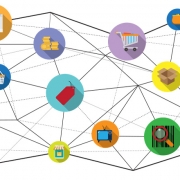6 Ways to Effectively Manage your Customer Experience
The customer is always right. Right? But is a customer who is always right always a satisfied customer? Not necessarily.
Even if you’ve gotten into the customer mindset and you’re listening to their complaints on social media (and meeting their needs at every customer touchpoint) you may be missing the boat if you’re not paying attention to the numbers behind your efforts.
And when it comes right down to it, satisfied customers are the key to sustainability and growth for any business. The more satisfied your customers are, the more likely your company will be successful–as much as six times more successful, in fact.
How to get the data for your customer satisfaction KPIs
So how do you, or for that matter, any business–Fortune 500 or corner store–gauge customer satisfaction? The answer is simple and business owners and managers have been doing it for centuries: Ask. Then, ask again, and ask some more.
You know it as a customer satisfaction survey. Because customer satisfaction is a moving target, you must continually survey your customers to find out what it takes to satisfy them today, tomorrow, and the next day. Then you’ll have the data you need to figure out how you’re doing–and how you stack up against the competition.
Most important customer satisfaction KPIs
Customer satisfaction is one of many key performance indicators (KPIs) that enterprises–whether for-profit, nonprofit, public, or private–routinely measure. Your customer satisfaction KPI is like a vital sign for your business; improve it and you improve the overall health of your venture.
But the customer satisfaction KPI is itself comprised of several KPIs. Here are some of the customer satisfaction KPIs you need to measure to make sure your customers change their tune:
1. Net Promoter Score (NPS)
Basically, NPS is a measure of how many of your customers like your brand enough to recommend (or promote) it to others. If more people recommend you than not, you’re score is positive and generally doing well. If an equal amount promote as do not, you’ve got some work to do to push that needle from neutral into the plus column. If more people don’t promote your business than do, you need to find out why. Referrals, after all, are the best form of advertising any enterprise can have. Create an NPS survey to see where you rank.
2. The customer effort score
This score gauges how easy—or difficult—it is for the customer to get a specific issue resolved; which is critical to measure when you consider that 94% of businesses would buy your product again if they cite a low level of effort from working with you!
To calculate your customer effort score, use the multiple choice question: “Overall, how easy was it to solve your problem with our company?” with the answer choices ranging from “Very easy” to “Very difficult.” To learn more about using the customer effort score question on your survey, check out our page: “How to use the customer effort score.”
3. Extremely satisfied or very satisfied
The percent of customers who rate their experience with your brand as “extremely” or “very” satisfied is another good barometer of your business’s performance. If you can determine why these people are so satisfied, you can apply those lessons to more of your customer base. The importance of satisfied customers can’t be understated. They’re more likely to be loyal, more likely to tell others about you, and they form a revenue base you can build on.
4. Overall satisfaction
Every business would like all of its customers 100 percent satisfied 100 percent of the time–but that’s not realistic. What’s important is that this customer satisfaction KPI should always be rising. If you’re overall satisfaction number is going up, you’re headed in the right direction. You can track whether or not your rating is going up by setting internal benchmarks. How? Make sure you’re repeating the same customer satisfaction survey so you can measure each set of new results against the old. That way, you can set goals, target problem areas, and make improvements to your customer service protocols the smart way. While this approach is super useful, don’t forget to look at specific touchpoints to figure out what’s working and what’s not.
5. External, industry benchmarks
Speaking of benchmarking, it’s also important to understand where your brand stands compared to the competition. Even the highest-rated companies only get it ‘right’ about 88 percent of the time, so everybody has plenty of room for improvement. Get external benchmarking survey data to compare your brand to your closest competitors.
6. Brand attributes
Make sure you and your customers are on the same page when it comes to what they expect from your company. Do customers see your startup company as “unique” and “innovative”? If they don’t, but you do, you need to find a way to bridge that gap. Send a brand attributes survey to customers to get a sense of how they view your company—so you can continue to work hard to meet their expectations or work harder to change your brand image. When your company’s and your customers’ perceptions of your attributes align, you’re much more likely to keep customers happy and coming back for more.
That’s it! Creating a survey to measure your customer satisfaction KPIs can be as easy as using a survey template or calling on some survey professionals who can guide you through the process to create a survey customized for your needs.











